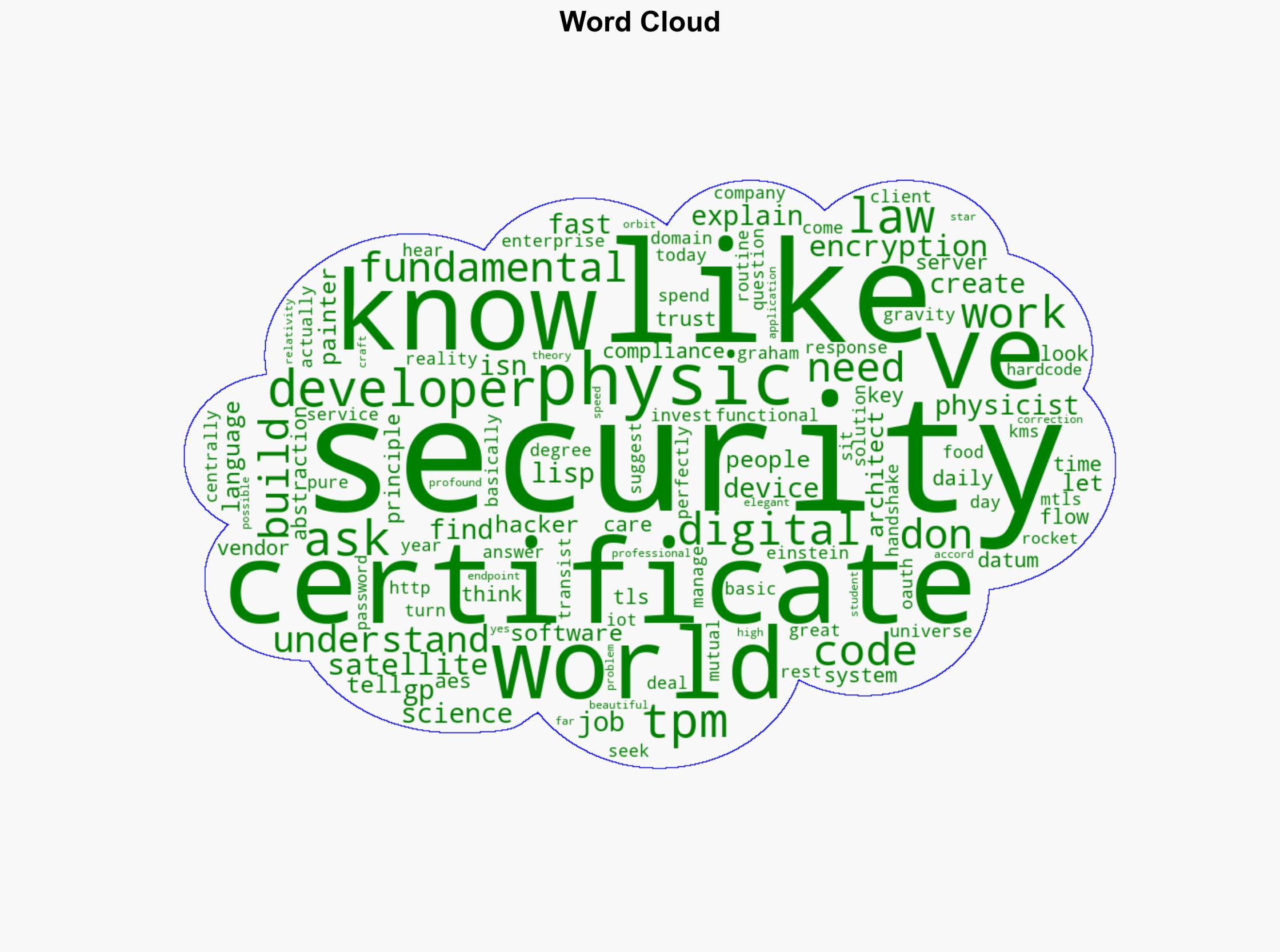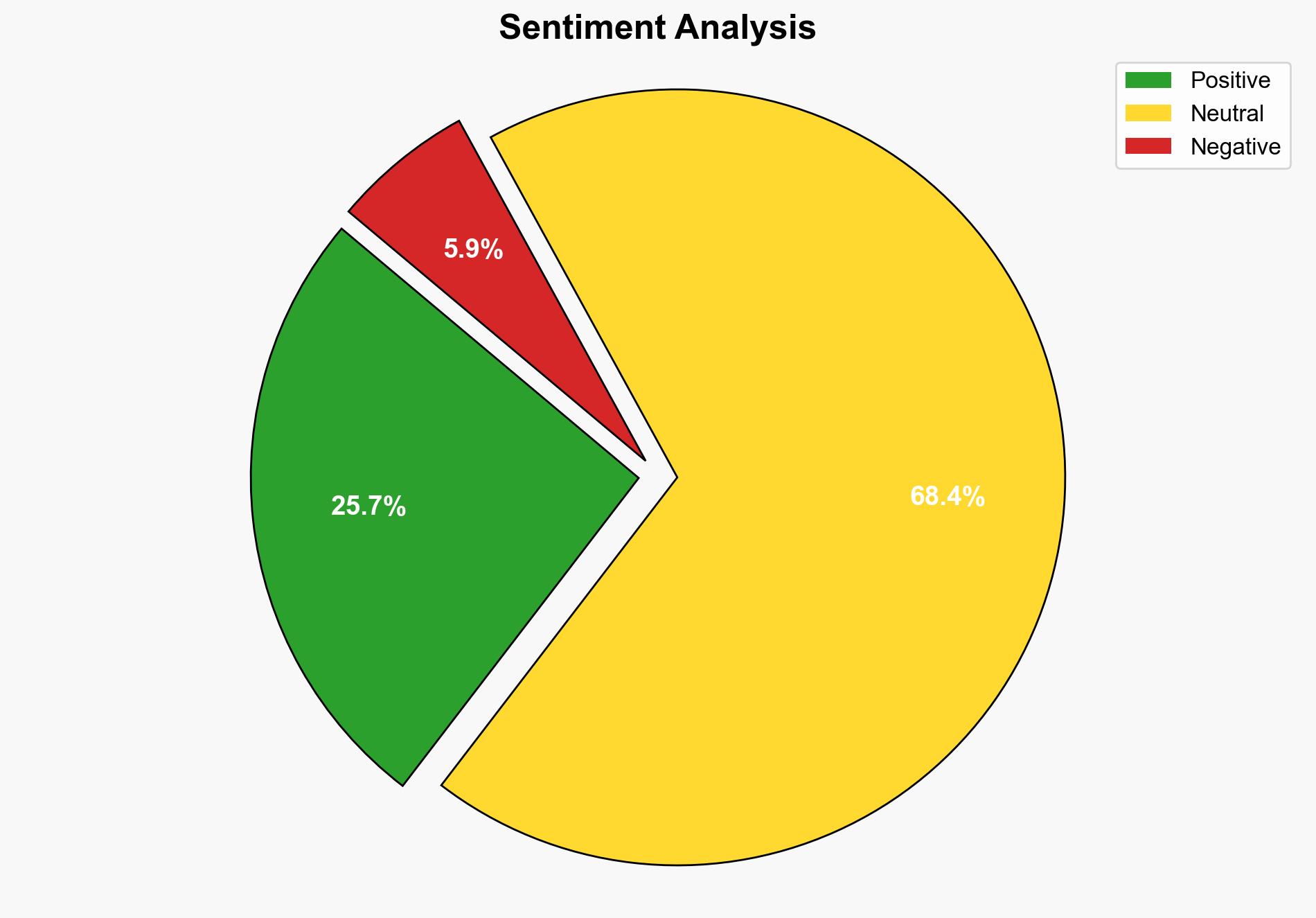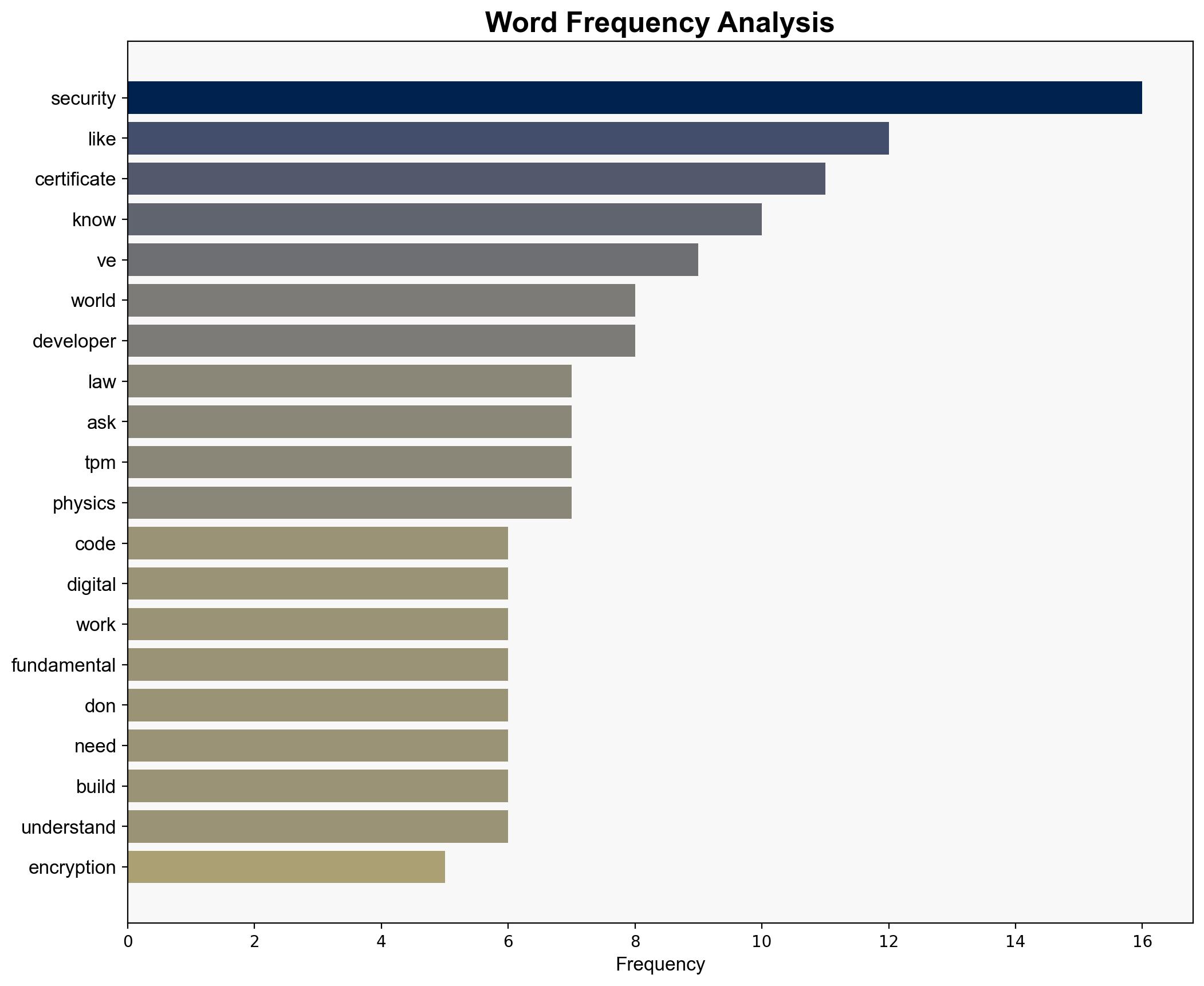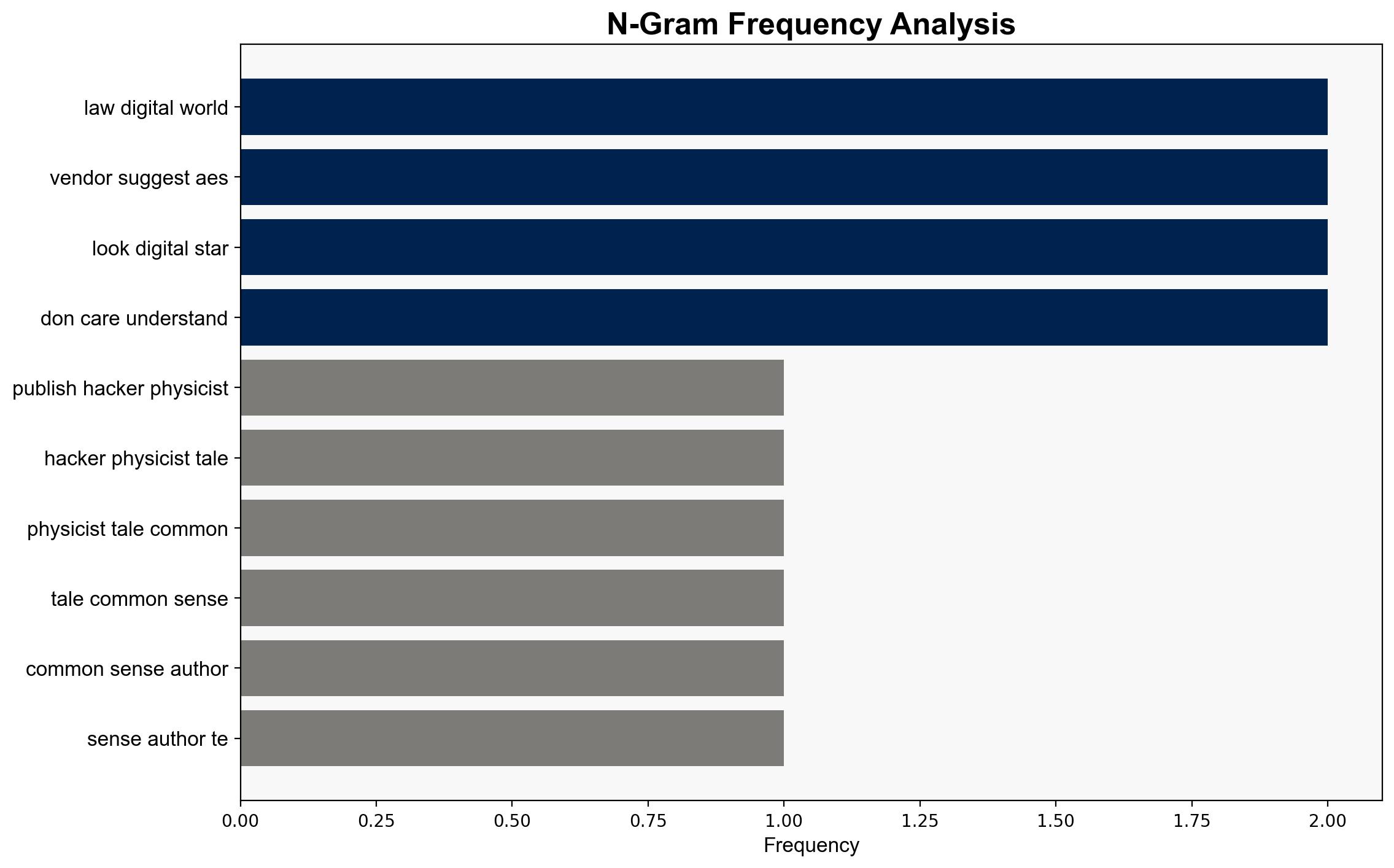Hacker and physicist a tale of common sense – Supasaf.com
Published on: 2025-08-22
Intelligence Report: Hacker and Physicist – A Tale of Common Sense
1. BLUF (Bottom Line Up Front)
The most supported hypothesis is that the narrative highlights a significant gap in cybersecurity awareness and implementation within enterprises, particularly in the context of evolving digital threats. Confidence Level: Moderate. Recommended action is to enhance cybersecurity training and awareness programs within organizations, focusing on fundamental principles and modern security practices.
2. Competing Hypotheses
1. **Hypothesis A**: The narrative is an allegory illustrating widespread ignorance and negligence in cybersecurity practices among enterprises, leading to vulnerabilities.
2. **Hypothesis B**: The narrative is a critique of the complexity and inaccessibility of modern cybersecurity protocols, suggesting that even professionals struggle with implementation due to overly complex systems.
Using the Analysis of Competing Hypotheses (ACH) 2.0:
– **Hypothesis A** is supported by examples of basic security misunderstandings and the author’s experience in explaining fundamental concepts.
– **Hypothesis B** is less supported as the narrative does not provide substantial evidence of systemic complexity being the primary barrier, rather it focuses on individual and organizational ignorance.
3. Key Assumptions and Red Flags
– **Assumptions**: It is assumed that the examples provided are representative of broader industry trends. There is an assumption that the author’s experience is typical across the sector.
– **Red Flags**: Potential bias from the author’s perspective as a security architect. Lack of quantitative data to support claims of widespread ignorance.
– **Blind Spots**: The narrative does not address potential solutions or improvements in cybersecurity education and infrastructure.
4. Implications and Strategic Risks
– **Cybersecurity Risks**: Continued ignorance and negligence could lead to increased vulnerabilities, making enterprises targets for cyberattacks.
– **Economic Risks**: Potential financial losses from breaches due to inadequate security measures.
– **Geopolitical Risks**: Vulnerable systems could be exploited by state actors, impacting national security.
– **Psychological Risks**: Erosion of trust in digital systems and security protocols among employees and stakeholders.
5. Recommendations and Outlook
- **Mitigation**: Implement comprehensive cybersecurity training programs focusing on fundamental principles and practical applications.
- **Opportunities**: Develop user-friendly cybersecurity tools and protocols to reduce complexity and enhance accessibility.
- **Scenario Projections**:
– **Best Case**: Improved cybersecurity awareness leads to reduced vulnerabilities and stronger defenses.
– **Worst Case**: Continued negligence results in significant breaches and economic losses.
– **Most Likely**: Gradual improvement in awareness with ongoing challenges in implementation.
6. Key Individuals and Entities
– **Ted**: Author and security architect, provides insights into the current state of cybersecurity awareness.
7. Thematic Tags
national security threats, cybersecurity, enterprise security, digital hygiene





